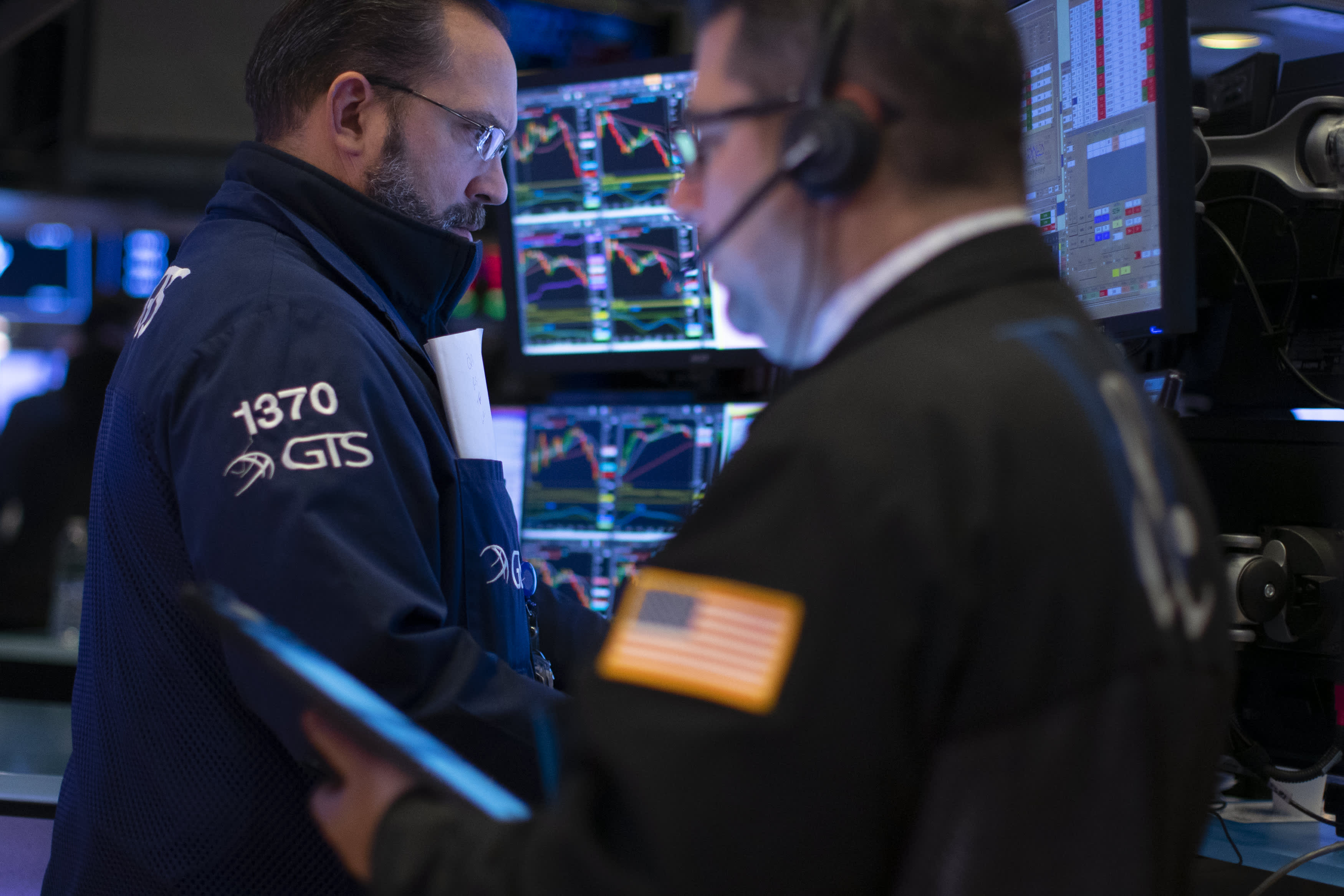Traders work on the floor of the New York Stock Exchange (NYSE) on January 10, 2020 in New York City.
Kena Betancur | Getty Images
Active portfolio managers could get some help in the battle against passive investing if a new kind of financial instrument gains traction with investors: the “nontransparent ETF.”
A nontransparent ETF is an exchange-traded fund that — unlike traditional ETFs — would not disclose what its actual holdings are on a daily basis. Instead, some nontransparent ETFs will publish a portfolio with other stocks that is representative of the underlying strategy. Other nontransparent ETFs will make their holdings available without giving the away the exact weighting of each holding.
Previously, traditional mutual-fund managers have been hesitant to put their strategies into ETFs because they were afraid others would learn how they are trying to get their edge versus the broader market. However, actively managed equity mutual funds have been losing assets for 14 straight years as investors allocate more money towards ETFs. These new, nontransparent ETFs could finally bring the active manager up to par with traditional ETFs, but it could take some time before people embrace the idea.
“Active managers have been bleeding AUM, have been seeing their profits shrink, have been laying off managers,” said Simon Goulet, co-founder of Blue Tractor, a company that offers structures for actively managed, nontransparent ETFs. “Combine the structural benefits of an ETF with the fact that many active managers can’t beat the market — and we’re in a bull market — it’s a disaster.”
Actively managed U.S. equity mutual funds have lost more than $1.6 trillion in assets under management since 2006, data from Morningstar Direct shows. In that time, ETFs have seen inflows of just over $1 trillion.
One of the benefits of investing in ETFs is they trade on an exchange every day, meaning investors can buy into them or sell out whenever they want during a market session. There are also tax advantages to ETFs relative to mutual funds given how the Internal Revenue Service classifies them.
But the biggest advantage ETFs have over mutual funds is how cheap they are. Most mutual funds have hefty investment minimums. With an ETF, investors just have to pony up the fund’s share price at the time of buying.
Investors have also been attracted to ETFs because active managers have struggled to beat, or even replicate, the market’s returns during this bull run. This has led to money pouring into ETFs such as the SPDR S&P 500 ETF Trust (SPY) and the Invesco QQQ Trust, which tracks the Nasdaq 100.
‘Secret sauce’
But the introduction of nontransparent ETF structures may be a start for active managers to at least be competitive in some of the advantages offered by these passive investment vehicles.
“I think a lot of the active fund managers who were hesitant to launch ETFs because they do not want to give away their secret sauce, in terms of daily holdings, it’s a nice way for them to enter into the ETF space,” said John Davi, chief investment officer at Astoria Portfolio Advisors, a firm that builds portfolios using ETFs.
BlackRock, American Century, J.P. Morgan and Nuveen signed deals with Precidian Funds to license their nontransparent ETF structure, ActiveShares. T. Rowe Price, Natixis and Fidelity also received last year federal approval to build ETFs using nontransparent structures. On Thursday, North Carolina-based fund manager Nottingham announced an agreement to use Blue Tractor’s Shielded Alpha structure for nontransparent ETFs.
To be sure, Davi thinks it will take time for these new ETFs to gain traction with investors.
“I’m personally expecting big active manager shops with good track records to get some success, but it could take a long time,” he said. “If people think billions are going to move into these things ASAP, it doesn’t work that way. Active management is very hard to sell. It takes a very long sales cycle.”
Sal Bruno, chief investment officer at IndexIQ, points out that investors may not like the idea of an ETF that’s not fully transparent.
“Will they be OK with the fact that they are nontransparent? Or have they been conditioned to the fact that they are transparent and anything else is not really an ETF,” he said.
Terry Norman, co-founder of Blue Tractor, points out the company’s nontransparent ETF structure, Shielded Alpha, shows investors all the holdings in the portfolio. However, the weighting of those holdings are slightly different to ensure the active manager maintains his or her edge.
“The Blue Tractor ETF structure tells you what ingredients are going in, but not the proportions,” Norman said. “Other structures are putting fake ingredients and pulling important ingredients out.”
Norman added that active management can benefit from these structures, particularly when market volatility rises. “When high volatility comes into play, or there’s major stock-specific events, that’s when you’re going to see the big difference.”
